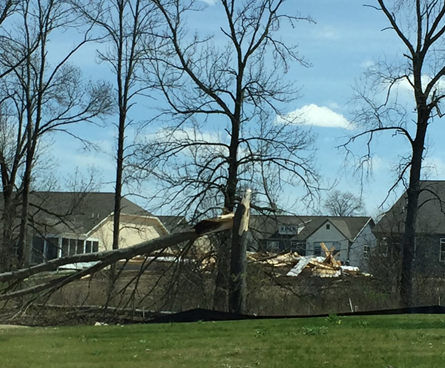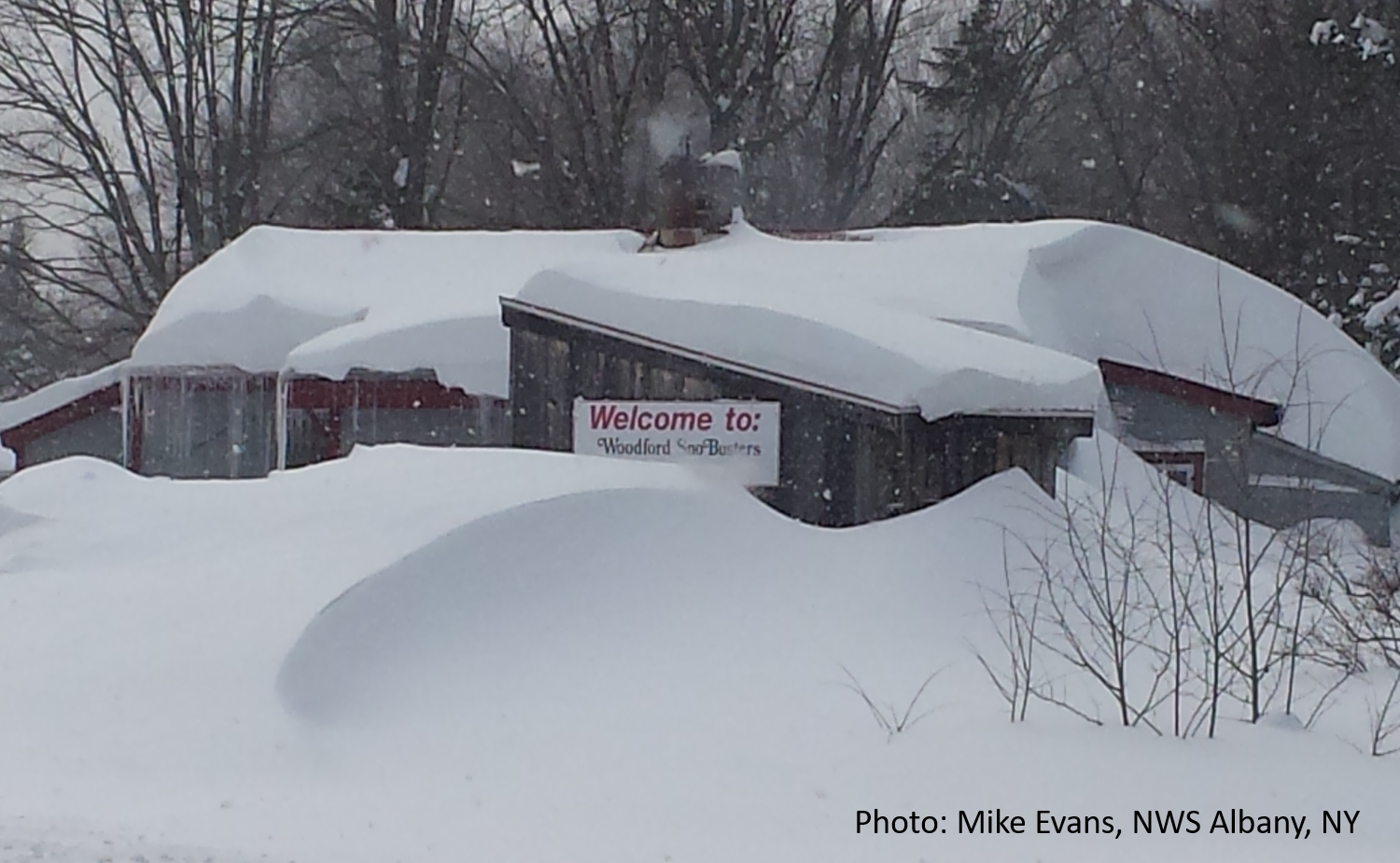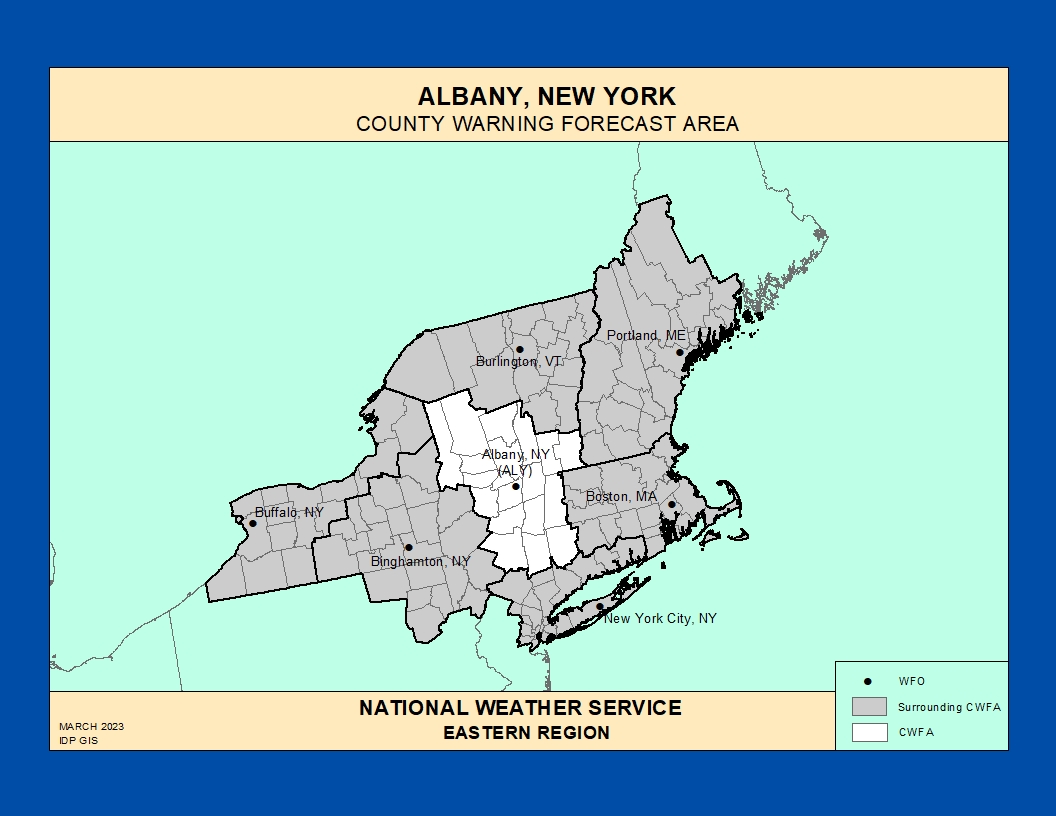| What is SKYWARN™? In most years, thunderstorms, tornadoes and lightning cause hundreds of injuries and deaths and billions in property and crop damages. To obtain critical weather information, the National Weather Service (NWS) established SKYWARN® with partner organizations. SKYWARN® is a volunteer program with between 350,000 and 400,000 trained severe weather spotters. These volunteers help keep their local communities safe by providing timely and accurate reports of severe weather to the National Weather Service. Although SKYWARN® spotters provide essential information for all types of weather hazards, the focus is reporting on severe local thunderstorms. In an average year, the United States experiences more than 10,000 severe thunderstorms, 5,000 floods and more than 1,000 tornadoes. |
Winter 2025-2026 Weather Spotter Training Schedule
Updated December 7, 2025: Three virtual basic winter spotter training sessions have been scheduled during the month of December. An advanced talk will be held in January 2026. In order to attend the advanced talk you must be a current spotter, have attended one of the previous virtual sessions or taken the courses through COMET MetEd.
A video recording of the basic presentation will be posted on our YouTube page following the end of the last basic virtual session. Those hoping to become a spotter must review the videos and take an online quiz. If you score 80% or greater on the quiz, you will pass and become a trained spotter. Thank you for your interest in the Skywarn program!
| Date | Time | Session | Registration Link |
| Mon, Dec 15, 2025 | 1-3pm | Virtual - Basic | Register Here! |
| Wed, Dec 17, 2025 | 7-9pm | Virtual - Basic | Register Here! |
| Fri, Jan 9, 2026 | 7-9pm | Virtual - Advanced Talk | Register Here! |
| Forecasters from the National Weather Service (NWS) in Albany, NY conduct storm spotter training sessions each year to help prepare spotters for the upcoming severe and winter weather seasons. These sessions are free and open to anyone who is interested in learning about hazardous weather and the role of a spotter. There are some eligibility requirements to be a spotter: You must be able to observe the weather, be 16 years or older and need access to a phone to call in reports, access to the internet to submit reports via email or social media, or be able to report information through the Amateur Radio Network. Our live training sessions are approximately 1.5 to 2 hours in length, and once you complete the training, you will be an official SKYWARN™ spotter and given a spotter certificate. This goal of the training is to train spotters to assist local officials and the NWS with early detection of hazardous weather, and provide ground truth during severe and winter weather events. The learning objectives of our live and online webinar training sessions are:
|
 |
Please contact us with your completed certificates.
|
HOW TO REPORT: Only when it's safe to so, please use one of the following ways to contact NWS Albany with your storm report:
Remember to include the following information:
Report the location/approximate location of the event. Be sure to distinguish clearly between where you are and where the event is thought to be happening (i.e., "I'm 5 miles north of Saratoga Springs. The tornado looks to be about 5 miles to my northwest"). Be sure that reports that are relayed through multiple sources carry the time of the event, NOT the report time. |
 |
Although reporting criteria may vary slightly depending on the spotter network and local needs, the significant weather elements below (Severe, Hail, Wind, Winter) are ones the National Weather Service (NWS) would like to know about as soon as possible. Again, reports should provide as much detail as possible to describe the where, when, how, etc., of the event.
Click on each item to view reporting criteria
| Weather Event | Report Criteria | What Specifically to Report |
|---|---|---|
| TORNADO | What damage did you observe? How long was it on the ground? When did it start and end? How wide was it? How far did it travel if known? |
|
| FUNNEL CLOUD | Organized, persistent, sustained rotation | |
| WALL CLOUD | Organized, persistent, sustained rotation | |
| HAIL | Pea-size or larger | Report the largest size hailstone |
| WIND GUSTS | 40 mph or higher | Specify estimate or measurement |
| RAINFALL | 1 inch or greater in an hour, and every inch thereafter 2 inches or greater storm total |
|
| FLOODING | Report flooded roadways, river and streams, giving approximate water depth. Is it standing water or is it flowing? Is the water level continuing to rise, staying steady or falling? Is the flooding occurring in a known flood prone area? Any damage from the flooding or mudslides? |
|
| WINTER WEATHER | Precipitation Type (Snow, Sleet, Freezing Rain) & Amount |
|
| STORM DAMAGE | Damage to structures (roof, siding, windows, etc) Damage to vehicles (from hail and/or wind) Trees or large limbs down Power/telephone poles and/or lines down Damage to farm equipment, machinery, etc. |
| Hail Type | Hail Size |
|---|---|
| Pea | 0.25 inch |
| Half-inch | 0.50 inch |
| Dime | 0.75 inch |
| Nickel | 0.88 inch |
| Quarter | 1.00 inch |
| Half Dollar | 1.25 inch |
| Ping Pong Ball | 1.50 inch |
| Golf Ball | 1.75 inch |
| Hen Egg | 2.00 inch |
| Tennis Ball | 2.50 inch |
| Baseball | 2.75 inch |
| Tea Cup | 3.00 inch |
| Grapefruit | 4.00 inch |
| Softball | 4.50 inch |
There are many types of flooding hazards.
| Weather Event | Criteria |
|---|---|
| Flash Flooding |
|
| River Flooding |
|
| Flooding |
|
| Wind Speed | Typically Observed Damage |
|---|---|
| 30-44 mph (26-39 kt) | Whole trees in motion. Inconvenient walking into the wind. Light-weight loose objects (e.g., lawn furniture) tossed or toppled. |
| 45-57 mph (39-49 kt) | Large trees bend; twigs, small limbs break and a few larger dead or weak branches may break. Old/weak structures (e.g., sheds, barns) may sustain minor damage (roof, doors). Buildings partially under construction may be damaged. A few loose shingles removed from houses. |
| 58-74 mph (50-64 kt) | Large limbs break; shallow rooted trees pushed over. Semi-trucks overturned. More significant damage to old/weak structures. Shingles, awnings removed from houses; damage to chimneys and antennas. |
| 75-89 mph (65-77 kt) | Widespread damage to trees with large limbs down or trees broken/uprooted. Mobile homes may be pushed off foundation or overturned. Roof may be partially peeled off industrial/commercial/ warehouse buildings. Some minor roof damage to homes. Weak structures (e.g., farm buildings, airplane hangars) may be severely damaged. |
| 90+ mph (78+ kt) | Many large trees broken and uprooted. Mobile homes damaged. Roofs partially peeled off homes and buildings. Moving automobiles pushed off the road. Barns, sheds demolished. |
| Weather Event | Criteria |
|---|---|
| Winter Weather |
|
| Ice Jam Flooding |
|
| Snowfall |
|
Below are few resources hosted locally at the National Weather Service in Albany, NY, as well as National and Amateur Radio resources concerning SKYWARN™.
Storm Prediction Center | National Hurricane Center | Weather Prediction Center | Northeast River Forecast Center | Climate Prediction Center
